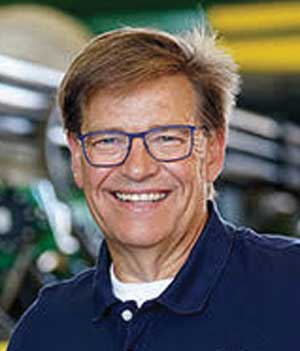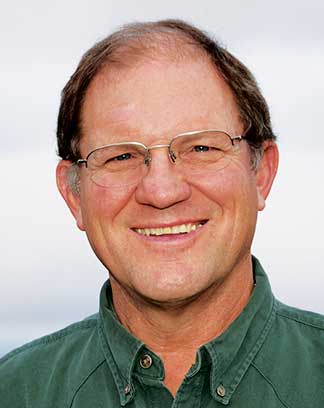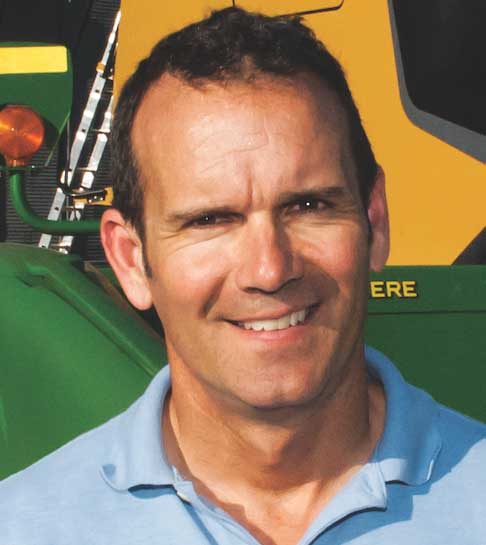When it comes to the evolution of farming, it’s been said that the pace of change has never been so fast and change will never be this slow again. The pairing of the rapid advancement of ag technology with the generational goals of growers is creating economic opportunities along with transitional challenges.
Our editors assembled 4 farmers from different parts of the U.S. to discuss how the lessons of 2020 will help shape future on-farm decisions along with some of the technological trends that will define future business strategies.
Joining the discussion were Brian Watkins, who manages a 7,000-acre corn and soybean operation near Kenton, Ohio; Ben Riensche, who runs a 15,000-acre corn and soybean operation in Jessup, Iowa; Trent Sanderson, a seventh-generation farmer raising corn, soybeans and wheat with a cattle finishing business; and Dick Wittman, who manages a 19,000-acre dryland crop, range cattle and timber operation near Lewiston, Idaho.
What follows are excerpts from the individual farmers on common themes discussed among the group.
Making Money Pay
The last few years have forced some farmers into difficult decisions, but at the same time, some have said challenges brought about new opportunities. Here’s what the group shared on what the last year taught them about how they need to evolve their farm in the future to remain relevant, competitive and profitable.
Ben Riensche: The past 3 or 4 years, our capital expenditures budget (capex) has been essentially zero. I mean, we’re in survival mode. Manufacturers keep coming out with farm implements that have more iPhone 12 features, the back massage chair and the heated bread board beside your operator’s seat and that kind of stuff.
How does that add value in my grain production? Costs keep getting driven up and the marginal value of these encroachments doesn’t feel so great. So we really haven’t bought a lot of farm equipment the past 4 years. I try and be a little bit funny in saying that, but the other thing is the dependability issue.

“Any way we slice it, the dependability of late model equipment has fallen to pieces…” – Ben Riensche
We’ve got probably a dozen modified front-wheel-drive tractors and articulated four-wheel drives in our operation. But there were several days this past fall that we had three of them in the shop with techs addressing error codes, working on troubleshooting. Any way we slice it, the dependability of this late model equipment has fallen to pieces. With some of the compliance issues we’ve had with Tier-4 engines and directives, the machines just don’t have the rigor that that used to have.
Dick Wittman: Being willing to invest in good management information and software that helps us really get a handle on what’s going on, bottom line, is the changing dynamic. And the larger, more sophisticated businesses are saying, “I value information and I’m willing to invest in it.”
It’s not just the cost of the software. The real cost is the human labor cost, of learning it, sitting at the desk, and conscientiously entering the data that needs to be entered — getting total buy-in in the team. You can’t have the people in management saying, “I’m all for this,” but the people that are driving tractors and hauling inputs aren’t invested into the importance of data management. That can be said in any kind of commodity, whether it’s livestock or grain commodities or whatever.

“People are waking up to the fact that we have half-a-million-dollar combines and half-a-million dollar sprayers, and we have opportunities to set up joint ventures or share resources with neighbors…” – Dick Wittman
As much as I hate to see it, we’ll continue to have consolidation in agriculture. The technology that we have in ag today is enabling a small number of people to farm several thousand acres very efficiently. So those who have had strong margins in the past, but had a lot of expensive toys that mostly sat in machine sheds and got looked at, they’re going to be challenged to recognize that they’re not full-time farms.
They’re part-time farms, and the only way they can stay in businesses is to share some of those resources with neighbors to get some more hours on combines or sprayers, or look at custom hiring or renting to stay at these smaller midsize type businesses. The larger operations are going to have the economies of scale that are going to be hard compete with.
Trent Sanderson: I’m a numbers guy, and I track everything that we spend on the farm. I’ve done so on conventional farm practices for a long time. In our neighborhood, the challenge is that the land is very expensive.
Tracking all of our inputs and trying to come up with the best marketing plan for the commodities that we raise — it’s a really big challenge to have a net profit per acre without any farm subsidy. We’re just exhausted relying on that for any grocery money, if you will, and wondering how much is coming this year.
What’s frustrating is the cashflow perspective of it. The industry has done such a good job of being so efficient, both on the marketing side and the crop raising side, that it’s now a challenge to make a buck on the farm. I know everyone’s situation is different, but in my case, that’s just become really exhausting.
We pride ourselves on being really efficient with the products we use. For example, for nitrogen (N) on a corn and soybean rotation, we’re down to 100 units of split-applied N, to yield 200-bushel corn. I don’t know how to trim any more expense out of the production side in terms of N usage, for example, to try to net more dollars per acre.
I’m constantly doing trials with more and less applied N, on different soil types in different crop rotations. We’ve reached a plateau.
The fast and simple answer for us in our location is to switch some acres to organic. I see more opportunity to have more acres certified organic. I don’t know if we’ll ever transition the farm as a whole — that’s going to come with time.

“Tracking all of our inputs and trying to come up with the best marketing plan for the commodities that we raise — it’s a really big challenge to have a net profit per acre without any farm subsidy…” – Trent Sanderson
On the conventional side, we’ve got to be aware of what our cost of production is, because there’s a limited amount of opportunity to grab enough net profit to put groceries on the table. So we need to be well aware of what we’ve got invested in our crop.
Brian Watkins: There has been a movement to more business-oriented farms. That’s going to be a segment of the production landscape in that farms that are growing, using not just their own capital — but borrowed money — will have to hold themselves to a higher standard.
But a lot of farms are pretty strong right now, financially. If they have a land base of any size, they’ve got a big cushion or they feel that they have a cushion. There’s not this overwhelming daily pressure to get their numbers better, right? They can continue to go along, use their intuition and get by. That’s reality.
The Data-Driven Farm CFO
For the next generation of farmer to really embrace that economic evaluation aspect of their operation, and drill down to that ROI piece vs. just a casual understanding of the operational profit and loss, more of a CFO mentality will be needed. But this shift may happen more out of necessity than desire.
Wittman: The successful farm of the future is going to have to be equally attentive to human resources management and financial management as they are crop production management. Farmers don’t get into farming because we like to manage people or interpret financials. We get into farming because we like to grow things.
But to be successful — as we grow we need to attract resources to our team that actually enjoy the financial part of the business.
Somebody that’s handling, hiring and training should be put in that role because they’re good at it and enjoy it, not just because there’s a vacancy and we’ve got to find a spot for somebody in the family to have a job. Mediocrity in those parts of the business will eventually kill them.
There has always been a tendency in agriculture for farmers to adopt the “I can do it myself” mentality and we very much have an attitude of independence. People are waking up to the fact that we have half-a-million-dollar combines and half-a-million dollar sprayers and so forth, so we have opportunities to set up joint ventures or share resources with neighbors.

“Ultimately, people who use data are going to be the winners. And if you don’t want to control that for your farm, then somebody else is going to do it…” – Brian Watkins
We need to be doing more of that so that we’re reducing investment in capital to get the job done. The overhead costs are killing this industry, and it’s like a frog in a frying pan with the heat being turned up. Very few people have a good handle on that cost structure. They manage their direct inputs fairly well, but as an industry, we have been pretty lax in understanding good cost accounting and the impact of fixed costs
and overhead.
Being more attentive to one of the most optimal ways to access capital equipment and getting work done and being more open to shared resources and joint ventures, is going to be something we’ve just got to rely more on.
Watkins: If I look at the millennial farmers — which would be my children’s generation — everybody is unique. But if I look at the many, many of them who I have interacted with, most of them did not start farming because of a strong business orientation. They’re farming because they have a connection to the land.
It’s about the agronomy. It’s about the work. It’s about the independence. It’s about raising a family. It’s not that they don’t have business skills, but that’s not their reason for being.
Ultimately though, people who use data are going to be the winners. And if you don’t want to control that for your farm, then somebody else is going to do it. As much as there’s been a ton of data there, it’s also been disappointing. We believed in the ‘90s when we first got yield monitors that by now, we would be fine-tuning things. We’d know the top 10, 20, 30 or 40 variables that affect yield and we would just pinpoint them because we had all these measurements, right? It didn’t work out because Mother Nature is a lot more complicated than we thought.
We’re right on the edge of a much more data-oriented equipment management regime, where we start keeping data on our equipment in terms of exactly how we’re using it. At the end of the year, we’ll be able to crunch numbers and get pretty precise in the terms of our asset utilization and our costs to operate these things, and then dial that into our capacity needs. If we need to plant everything in 7 days, we’re going to take this data from our operations and we’re going to say, “What needs to change?” Those who are able to handle that and adapt that are going to be ahead.
But I don’t think farmers themselves are just going to suddenly become hugely data-oriented. But if you can bring this to them and show them, “Hey, here’s an analysis of your operation. Here’s how we can make you $30 an acre because there’s a lot of money involved in your operational expenses,” I think that is coming.




![[Technology Corner] A Big Step Forward for Interoperability & Data Sharing](https://www.precisionfarmingdealer.com/ext/resources/2025/12/12/A-Big-Step-Forward-for-Interoperability--Data-Sharing.webp?height=290&t=1765565632&width=400)


